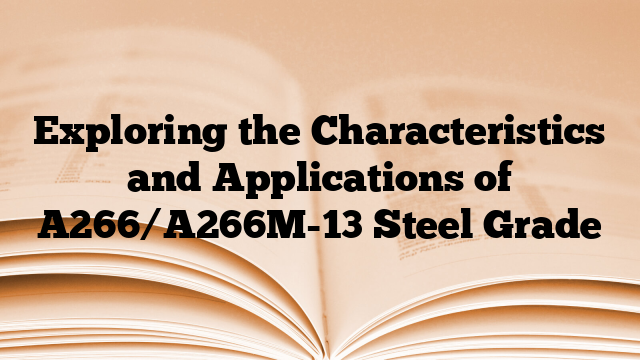Explanation:
The A266/A266M-13 steel grade is a carbon steel specification established by the American Society for Testing and Materials (ASTM). It specifies the chemical composition, mechanical properties, and other requirements for carbon steel forgings for pressure vessel components.
The chemical composition of A266/A266M-13 steel grade includes elements such as carbon, manganese, phosphorus, sulfur, silicon, and copper. These elements are carefully balanced to achieve the desired mechanical properties and performance characteristics of the steel.
The mechanical properties of A266/A266M-13 steel grade include tensile strength, yield strength, elongation, reduction of area, and hardness. These properties determine the strength, toughness, and ductility of the steel, making it suitable for various applications.
A266/A266M-13 steel grade has a wide range of applications in industries such as oil and gas, chemical processing, power generation, and petrochemicals. It is commonly used in the fabrication of pressure vessels, tanks, heat exchangers, and other equipment that requires high strength and resistance to corrosion.
The standard number A266/A266M-13 refers to the specific version of the ASTM specification for this steel grade. The “13” in the standard number indicates the year of the standard revision.
When using A266/A266M-13 steel grade, it is important to ensure proper material selection, heat treatment, and fabrication practices to meet the specified requirements and ensure the performance and safety of the final product. Compliance with the standard ensures that the steel grade meets the necessary quality and reliability standards.

